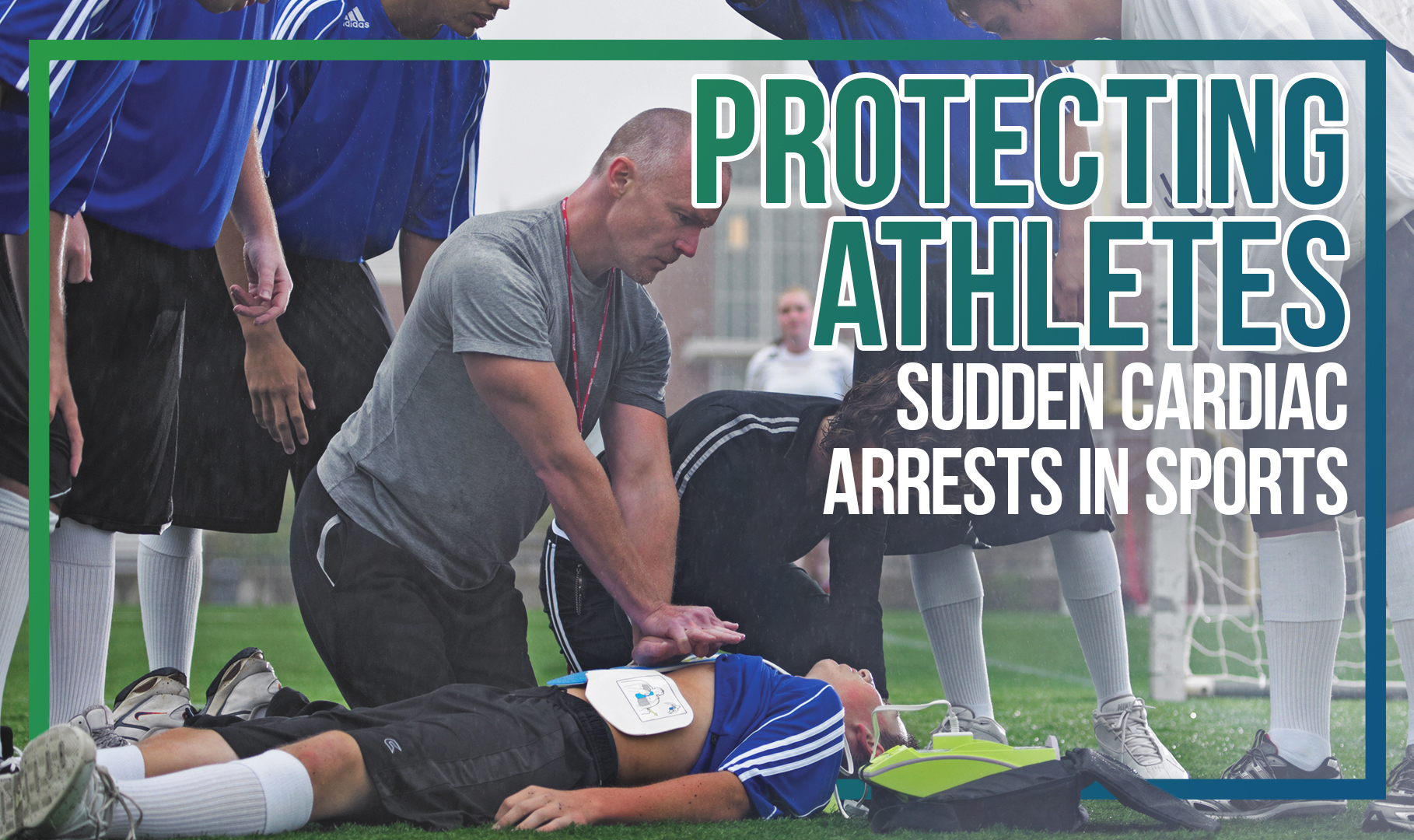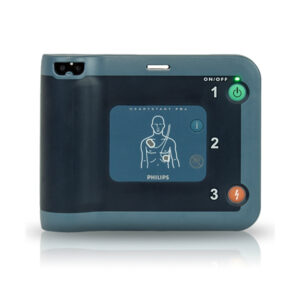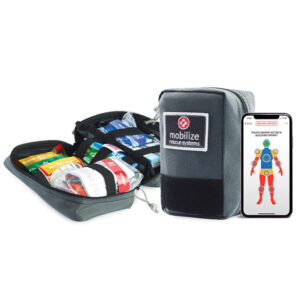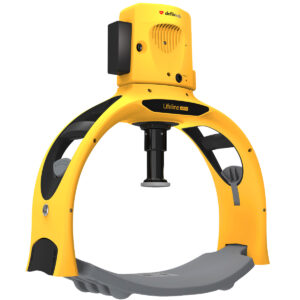Blog
Protecting the Athletes: Sudden Cardiac Arrest in Sports

In light of Damar Hamlin’s survival of a Sudden Cardiac Arrest (specifically, Commotio Cordis), now more than ever is the time to speak on the need for lifesaving equipment in sports settings.
 Commotio Cordis is very rare — in fact, just over 200 cases have been reported to the U.S. Commotio Cordis registry since the mid-1990s. It’s a condition where an impact to the upper portion of the chest at a specific instance during the heartbeat can disrupt the heart, causing a Sudden Cardiac Arrest. This condition is much less common than a normal SCA, but all forms of Cardiac Arrest require CPR and defibrillation equipment. Otherwise, life could be at risk before the ambulance arrives.
Commotio Cordis is very rare — in fact, just over 200 cases have been reported to the U.S. Commotio Cordis registry since the mid-1990s. It’s a condition where an impact to the upper portion of the chest at a specific instance during the heartbeat can disrupt the heart, causing a Sudden Cardiac Arrest. This condition is much less common than a normal SCA, but all forms of Cardiac Arrest require CPR and defibrillation equipment. Otherwise, life could be at risk before the ambulance arrives.
What causes young, healthy athletes to go into sudden cardiac arrest? Sometimes, when an athlete suffers an SCA, it’s partially due to an undetected heart condition. Approximately one in three hundred youth have a hidden heart condition that can put them at risk, and Heart Disease is the leading cause of death in the United States. But sometimes, SCAs can occur in athletes or individuals with no underlying heart conditions or history of cardiac issues. These conditions and emergency events for athletes have little-to-no warning signs and, if not dealt with in a matter of minutes, can cause permanent damage or death.
Since we cannot screen athletes for the potential for SCAs with 100% accuracy, spectators, parents, coaches, and trainers should prepare in case of an emergency.
What can be done to prepare?
For non-medical professionals (Parents, coaches, teachers, etc.)
1). Be Equipped with an AED:
Certain emergency events require specific equipment. The only way to reset the heart’s rhythm for a Sudden Cardiac  Arrest is a shock from an Automated External Defibrillator (AED). AEDs can have a variety of bells and whistles, but all perform the same essential functions. All AEDs guide non-professionals through the steps of SCA event response with prompts and audio instructions. Some AEDs have more features, with built-in pediatric settings, multi-language instructions, or CPR feedback to guide proper compression depth and rate.
Arrest is a shock from an Automated External Defibrillator (AED). AEDs can have a variety of bells and whistles, but all perform the same essential functions. All AEDs guide non-professionals through the steps of SCA event response with prompts and audio instructions. Some AEDs have more features, with built-in pediatric settings, multi-language instructions, or CPR feedback to guide proper compression depth and rate.
2). Be Equipped with an emergency kit:
 To be prepared for non-cardiac emergencies in an athletic setting, we recommend a trauma response or bleeding control kit. We offer a variety of emergency response kits, ranging from professional grade to simple bleed control. For example, the Compact Mobilize Rescue System comes with multiple sets of dressings and tourniquets and an app license that quickly helps you identify and initially address many severe injuries.
To be prepared for non-cardiac emergencies in an athletic setting, we recommend a trauma response or bleeding control kit. We offer a variety of emergency response kits, ranging from professional grade to simple bleed control. For example, the Compact Mobilize Rescue System comes with multiple sets of dressings and tourniquets and an app license that quickly helps you identify and initially address many severe injuries.
3). Be Trained in CPR:
Knowing CPR is crucial to saving an SCA victim. CPR class helps you identify, respond, alert authorities, and begin lifesaving chest compressions to keep the victim’s blood and oxygen pumping to the brain. Quality CPR is one of, if not the most important, steps in the chain of SCA survival. To learn more about CPR training offerings, email our Clinical Specialist, Trent Harris, at tharris@mmemed.com.
4). Make & Practice an Emergency Plan:
Many organizations, from businesses to the military, have an EAP or an Emergency Action Plan to help respond to certain emergencies. An EAP provides a trusted emergency response gameplan where everyone knows the protocols and procedures, ensuring a smooth reaction to crises. Ensure you and your team are familiar with the location and accessibility of AEDs or emergency kits around the stadium or athletic park.
For medical professionals (EMTs, Paramedics, First Responders, etc.)
While steps 1-4 apply to the public and professionals alike, there are additional ways that emergency responders can be equipped and prepared.
5). Equipping the Professionals:
 An Automated Chest Compression Device automatically performs mechanical compressions at the proper depth and rate, eliminating human fatigue and error while freeing up rescuers for other tasks. Automated chest compression devices can provide robust compression support during CPR over the long term, increasing survival rates with quality compressions.
An Automated Chest Compression Device automatically performs mechanical compressions at the proper depth and rate, eliminating human fatigue and error while freeing up rescuers for other tasks. Automated chest compression devices can provide robust compression support during CPR over the long term, increasing survival rates with quality compressions.
Another aspect of professional SCA response is patient transport. Emergency stretchers are a must, with options for manual or powered stretchers designed to aid in transporting a patient from site to ambulance to hospital.
6). Professional emergency planning
For professionals, the emergency response plan is essential. Predetermined communication with event staff to clear a path for the ambulance is critical. Additionally, prepare the staff for your protocols so they can clear onlookers, handle spectators, and support you in the rescue process as needed.
Damar Hamlin returned to Buffalo, cleared protocols, and is set to be discharged home. His recovery is a testament to the teams’ respective training staff, their immediate action, and the preparedness and efforts of trained emergency responders. In an athletic setting, proper training, equipment, and planning can save lives on the field or in the stands.
Sources:
– https://parentheartwatch.org/resources/what-is-sca/
– https://parentheartwatch.org/resources/sca-prevention/warning-signs-risk-factors/
– https://www.foxsports.com/stories/nfl/former-nfl-team-physician-explains-damar-hamlin-injury
– https://www.defibtech.com/news/latest/sudden-cardiac-arrest-sports/
